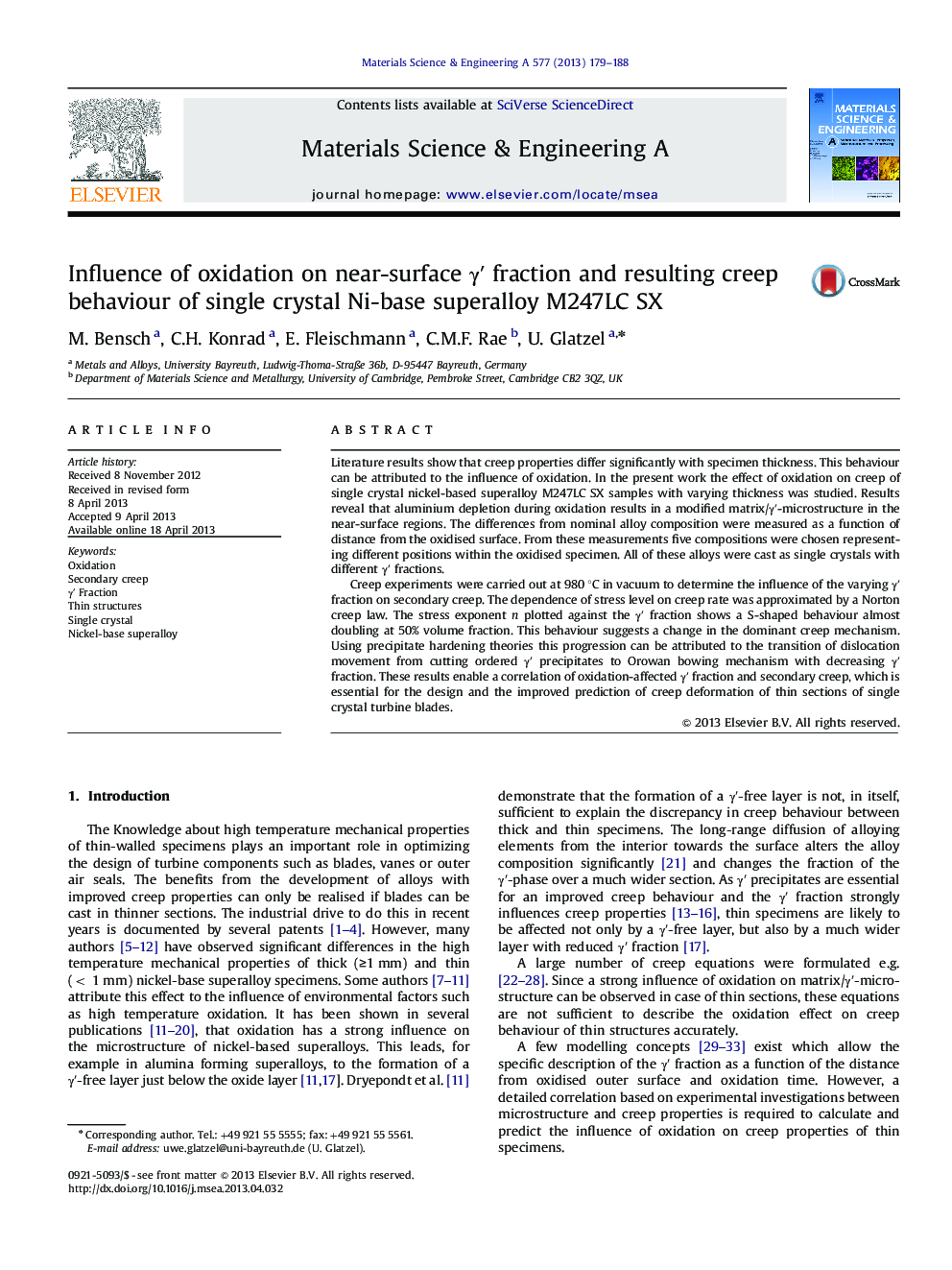| Article ID | Journal | Published Year | Pages | File Type |
|---|---|---|---|---|
| 7982955 | Materials Science and Engineering: A | 2013 | 10 Pages |
Abstract
Creep experiments were carried out at 980 °C in vacuum to determine the influence of the varying γⲠfraction on secondary creep. The dependence of stress level on creep rate was approximated by a Norton creep law. The stress exponent n plotted against the γⲠfraction shows a S-shaped behaviour almost doubling at 50% volume fraction. This behaviour suggests a change in the dominant creep mechanism. Using precipitate hardening theories this progression can be attributed to the transition of dislocation movement from cutting ordered γⲠprecipitates to Orowan bowing mechanism with decreasing γⲠfraction. These results enable a correlation of oxidation-affected γⲠfraction and secondary creep, which is essential for the design and the improved prediction of creep deformation of thin sections of single crystal turbine blades.
Related Topics
Physical Sciences and Engineering
Materials Science
Materials Science (General)
Authors
M. Bensch, C.H. Konrad, E. Fleischmann, C.M.F. Rae, U. Glatzel,
